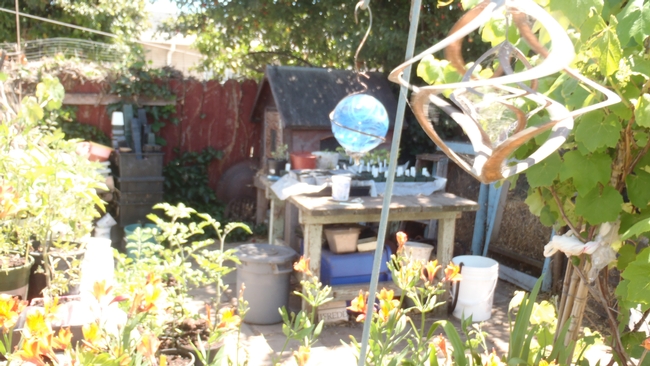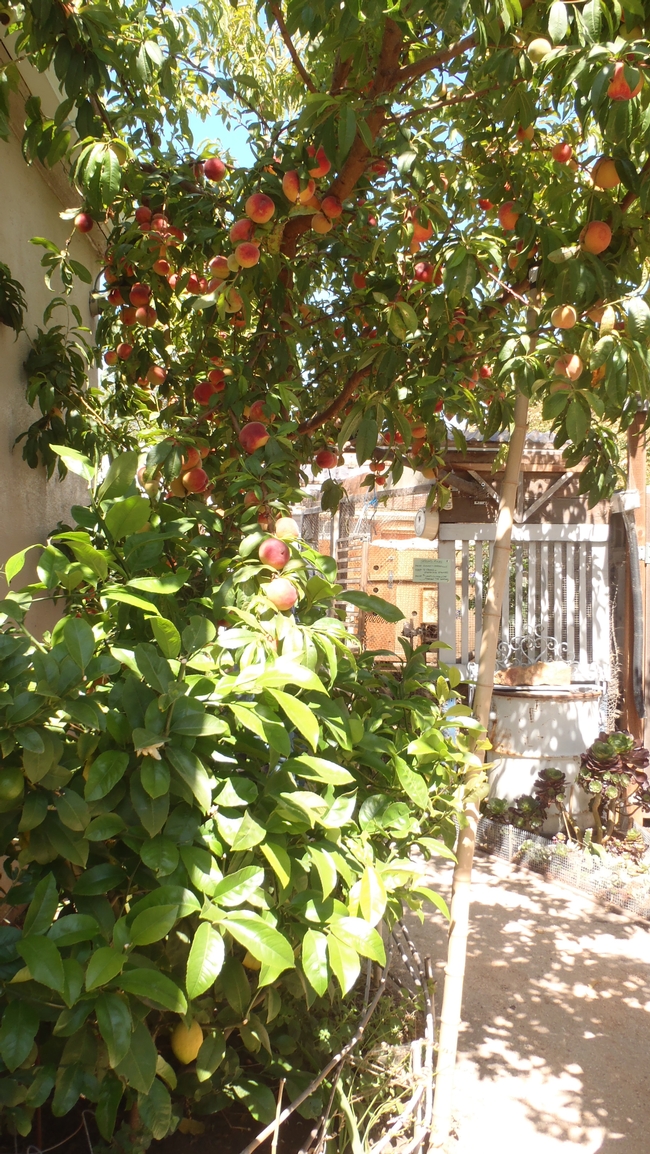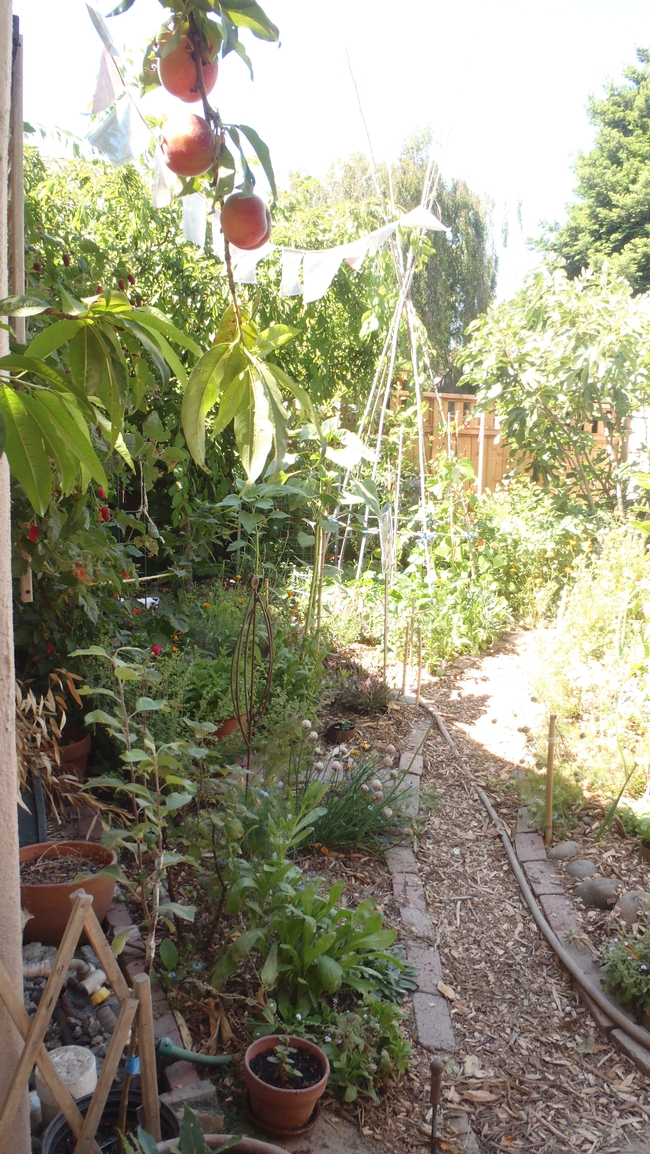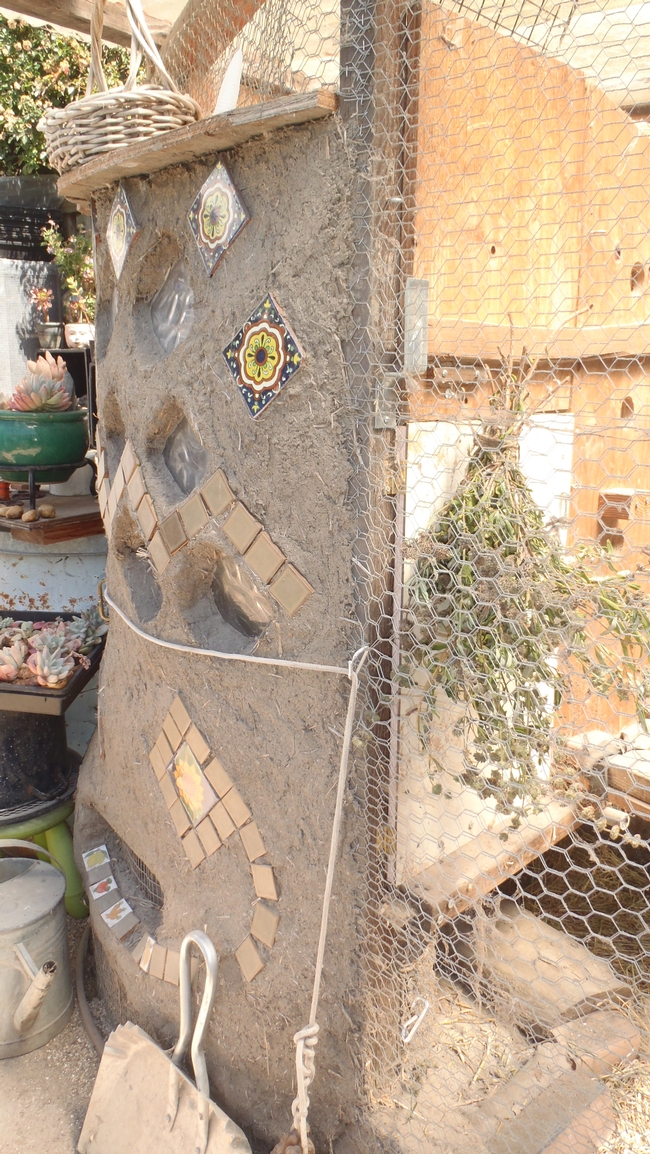I chose to visit three different sites of varying sizes and themes, because I really enjoy seeing how creative people can get in designing edible landscaping around the restrictions and limitations found in their backyards (e.g., size, availability of sunlight, etc.), and also tastefully incorporating small livestock such as chickens and rabbits. Despite their many differences, all three sites I visited sought to incorporate principles of permaculture and sustainability in their respective designs.
Large Lot consisting of 1/4 acre of which approximately 5,000 square feet are in cultivation
This location was formerly a crack house that has since been converted to an artist colony. Unlike the other two sites discussed herein, it was the fanciful cob structures on site built by the residents, and not the garden itself, that was the focal point of this particular tour. For those of you who are movie buffs, these structures look like the hobbit houses from the Lord of the Rings trilogy—there are no sharp edges to any of the structures, endless curved walls flow into each other, and recycled glass embedded in the walls impart ever-changing light patterns inside each building. To my great surprise, the resident giving the tour of the property, said that it takes only one season (e.g., summer) to build one of these structures by hand. She explained that the soil/earth they incorporate into the cob, come from the property itself. Indeed, the residents even built a chicken coop out of cob.
Unfortunately, I am unable to include pictures of this site because the residents asked that any pictures taken of the property, not be posted on the internet. However, a Google search of “cob houses” or “cob structures” will give you an idea as to what I am describing herein
Mid-Size Lot consisting of 6,000 square feet of which 4,800 square feet are in cultivation
The owner of this property sought to make a functional space to grow and preserve food, raise backyard chickens and rabbits (as pets), and to entertain. The property owner has actively incorporated what is known as “layering” or “stacking” in permaculture-speak, whereby smaller plants, in order of descending height, are planted under taller trees and plants, to optimize space in the garden. Also, only multi-purpose plants are incorporated in this site. For example, the owner grows chayote--the vine creeps along her arbor to provide shade, the fruit of the plant is for eating, and the plant’s leaves are used to feed the chickens on-site.
Postage Stamp-Sized Lot consisting of 3,300 square feet of which 800 square feet are in cultivation
Small is certainly beautiful when it came to this particular site. In a mere 800 square feet, the owner of this residence was able to incorporate over 80 varieties of plants, consisting mostly of edibles. This yard is adorable and well-maintained. Despite her small lot, the property owner, along with some friends, were able to incorporate and build a large chicken coop made out of cob to house her backyard flock (see pictures).
Although the backyard urban tours have been concluded for 2013, as far as I understand, this tour will be put on again in 2014. I have also read that the Institute for Urban Homesteading is expanding the location of its homesteading tours to possibly include Vallejo, if a suitable site or sites can be found. For more information, please seehttp://www.iuhoakland.com/.
Attached Images:



